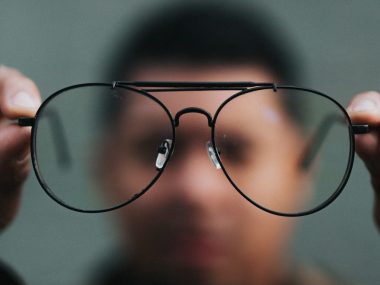One argument against the dangers of virtual reality (VR) is that there’s no evidence that it has any significant negative effect on users’ health and well-being over time periods longer than a few hours of gameplay at a time. According to experts, short stints of time spent engaging in certain activities will not cause any major damage to an individual’s physical or emotional state of well-being. Although, engaging in risky behavior while using virtual reality games can have serious consequences – both physically and mentally – regardless of its perceived benefits at present time.
Having said that, let’s take a look at 4 health risks associated with virtual reality.
4 Health Risks Associated with Virtual Reality

Nausea
Some VR headset users report experiencing nausea and vertigo. Its realistically replicated vibrations can make a person feel tired, queasy, or woozy while also altering how they perceive time and space.
In reality, lab rats exposed to VR had undesirable side effects like “cyber sickness” and aberrant patterns of brain activity, according to a UCLA Keck Center for Neurophysics study. Additionally, researchers found that 60 percent of the rats’ neurons just stopped functioning in virtual reality settings.
To prevent motion sickness, it is advised that users take frequent breaks from virtual reality. They can alter the headset’s fit, tighten or relax the straps, and fix the focal point or eye range.
Anxiety
Wearing a full occlusion headset for more than a few minutes can cause stress or anxiety due to the immersive nature of virtual and augmented reality.
Virtual reality has the potential to elicit a wider range of feelings than just looking at pictures or watching movies, depending on the imagery that users are viewing. For instance, watching virtual reality imagery of the Syrian conflict might make the viewer anxious, scared, and frightened.
Because viewers perceive everything as if they were physically present in the scene, it may take some time to get over this nervousness.
Strain on the eyes
Users of VR headsets may experience significant eye strain. They struggle to see the pixelated screen using a single refractive optic element, straining their eyes to focus. The ocular problems with near-to-eye gadgets are typically not addressed by headsets, and they soon become unpleasant after a few minutes.
The user’s field of view needs to be kept as wide as possible by headset designers. Humans typically have a field of vision of 200 degrees, including 60 degrees of peripheral vision and 140 degrees of binocular vision for depth perception. Today’s headsets have a 35-degree field of view, giving the user the impression that they are just “viewing” the video. Users can feel entirely involved in the exhibited material by increasing it to 60 degrees FoV or greater.
To offer the most pleasant viewing experience for both 2D and 3D information, headsets should also simulate how human eyesight actually functions. In order to prevent eye strain, headset manufacturers must resolve the tension known as the “accommodation/convergence conflict.”
Exposure to radiation
VR headsets and other wearable devices could expose the user to dangerous electromagnetic radiation. These gadgets link wirelessly to your smartphone or computer using Bluetooth or WiFi, and they have clever sensors that let you fully immerse yourself in the VR experience.
Smartphones, which emit radiation, are used in some virtual reality headsets. The effects of cell phone radiation on the human reproductive system, sleep patterns, and mood swings have previously been documented in research. With the ability to wirelessly connect to WiFi and function with smartphones, VR headsets now also emit radiation and may perhaps cause long-term health problems.
In earlier research, EMFs were identified as a type of carcinogen—a substance that can result in cancer in living tissue. This effectively compares it to sources of carcinogens that are more known, like cigarettes.
A federal interagency committee inside the National Institutes of Health called the National Toxicology Program (NTP) did studies on mice that showed how people exposed to electromagnetic radiation may be more prone to cancer.
The World Health Organization (WHO) describes cell phones as “potentially carcinogenic” in different research. The study also suggests that radiation exposure levels rise with closer closeness to the devices. Given that wearables are made intended to be worn consistently close to the body, this particular finding raises concerns about them even further.
To sum up
If this is your first time using VR, it’s best to spend some time reading the safety documents that are supplied. Consider the potential health hazards of virtual reality before deciding if you wish to engage in it.






